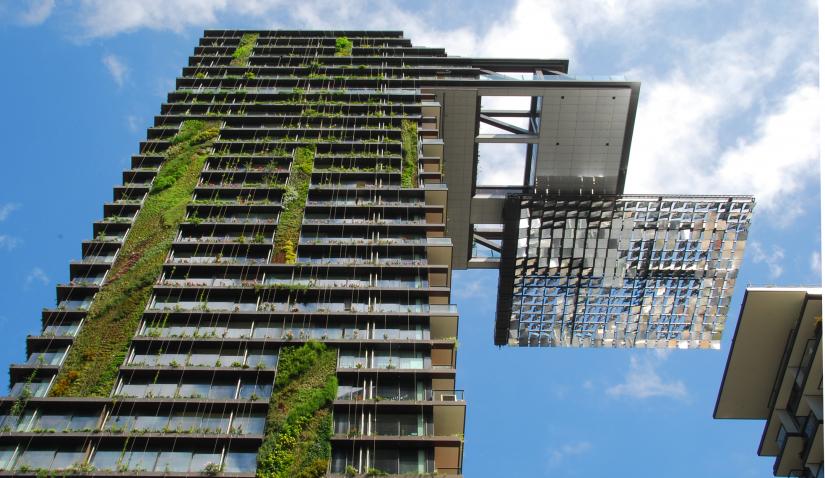Case study: ISF and Frasers Property
ISF and Frasers Property Australia: alignment in sustainability

Central Park, Sydney has its own low-carbon natural gas power plant. Source: Wikipedia, CC by 2.0.
From its vertical garden of flowers and plants, to the motorised mirrors tracking daylight, to less visible infrastructure — sustainability is core to the multi award-winning Central Park development opposite UTS on Broadway.
The sustainable development is the result of a fruitful partnership between joint venture partners Frasers Property Australia and Sekisui House Australia, and researchers at UTS Institute for Sustainable Futures (ISF) and Elton Consulting. One Central Park is the only building of its height to have won a 5 Star Green Star Rating by the Green Building Council of Australia, with all partners determined to ensure the building upheld the integrity of their sustainability focus.
"We didn’t know Frasers Property," says White. So when White and his team presented their comprehensive sustainability plan to Frasers Property Australia Managing Director Dr Stanley Quek, who’d flown in from Singapore, they didn’t know what to expect.
And so, along with the recommendations for waste, greening, social cultural, transport and digital sustainability, they added conditions. "We made it clear we would walk if we didn’t like what they were doing," says White. "We had a reputation to uphold."
But Quek, far from dismissing sustainability as other developers had done, said, "That’s great. I want more."
From that point on it was clear that the values of ISF and Frasers Property were aligned.
The initial presentation by ISF led to discussions about how more greenery could be incorporated into the site. The City of Sydney had stipulated that the top part of the land had to be preserved as parkland. "But Frasers turned that all on its head," says White. "Their plan was to push the buildings back and make them a little higher in exchange for more greenspace."
Shared values propelled the vision and the development’s progression. "It was amazing," says White. Throughout the planning stages, White and his team took part in meetings with architects and contractors, trying to influence the outcomes. "All with the pressure of deadlines and budgets," says White.
The comprehensive recommendations made by ISF were implemented and resulted in green infrastructure that includes a low-carbon trigeneration power plant and internal water recycling plant. The trigeneration plant is twice as efficient as the coal-fired power stations that produce 80 per cent of Sydney’s electricity. Water (a key strength of ISF) is recycled from rooftops, toilets and laundries to irrigate parks, rooftop gardens and the vertical garden.
Today the partnership with UTS and Central Park continues to provide mutual benefits. In 2016, UTS signed an agreement with Brookfield Energy Australia to source cooling thermal energy via underground pipes from Central Park’s supply. The supply means an almost three percent reduction in UTS’s greenhouse gas emissions (over 1,000 tonnes a year).
"It was clear from those very early meetings", says White, "that we were on the same page with Frasers Property. We both wanted a best-in-class development and that’s exactly what was delivered."
